The Bullet Club – Are they headed to the WWE?Rumours have intensified recently about the WWE bringing in the Bullet Club into the company from New Japan Pro Wrestling to once again team up with Finn Balor.For the uninitiated, the Bullet Club was the faction that accelerated Balor's rise into the heavyweight division of NJPW when we was there as Prince Devitt. The stable helped transition Balor from a fan favourite into a heel. Initially comprising of Balor, Karl Anderson, Bad luck Fale and Tama Tonga, it grew to include the Young Bucks and Doc Gallows.It has been reported that Anderson and Gallows are close to being signed by the WWE and the company has already trademarked the term 'Balor Club' since the Bullet Club moniker is an NJPW exclusive.Currently, the Bullet Club is led by former TNA star AJ Styles and he might jump ship to the WWE roster soon as well. With the possibility of yet another faction arriving in the WWE, this list takes a look back at the top 10 stables in Pro Wrestling history.P.S: At least three wrestling members are required for a group to be considered a faction.
#1 nWo
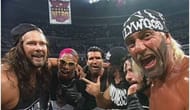
WWE has no plans for these former AEW wrestlers? Here's why!
No prize for guessing the winner of this list. Tthe impact the nWo made on the wrestling scene has been unprecedented. The trio comprising of Scott Hall, Kevin Nash and Hulk Hogan was a huge draw and helped WCW overtake and almost bankrupt the WWE during their dominant run.
WWE make it a point in almost all their WCW related DVD releases to point out the fact that over-reliance on the nWo was one of the major reasons for WCW eventually going out of business, but the fact remains that Vince McMahon had no qualms about reincarnating the nWo with the original members well past their prime as late as 2002 precisely because they were still hot property.
The nWo officially came into being at Bash at the Beach 1996 when perennial fan favourite Hulk Hogan turned heel and joined the Outsiders, (Hall and Nash – who were portraying themselves as WWE wrestlers in WCW) much to the dismay of the crowd.
The faction had everything – One of the most charismatic wrestlers ever in Hall, a powerhouse in Nash and quite simply, the man who was synonymous with pro wrestling in Hogan.
The trio dominated the WCW as part of some edgy and close to real-life angles, which attracted the fans tired of the same old WWE product. nWo’s ascendancy brought about perks like guaranteed contracts and better remuneration to the wrestlers, however, the angle became quite convoluted as different incarnations of nWo came about and half of the WCW roster became members.
The creative control enjoyed by the likes of Hogan and Nash was also detrimental to the WCW Creative, but the faction enjoyed a new life in the WWE in early 2002. However, Hall’s rising substance abuse and Nash’s injury concerns put paid to the planned long run and the nWo angle finally ended just before Vengeance 2002.
#2 DX
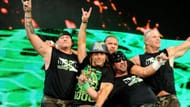
Designed to counter the nWo, the initial incarnation of DX was lead by Shawn Michaels with Triple H, Rick Rude and Chyna in supporting roles. Just like the nWo, DX also displayed edgy content and was one of the main factors that helped WWE usher in the ‘Attitude era’ during the mid-1990s.
Michaels was the heart and soul of the faction and his antics – even though heelish in nature – were impossible to resist or ignore. When a neck injury threatened to bring Michael’s in ring career to a halt, Triple H took over the leadership of the faction. Soon the New Age Outlaws and X-Pac became members of D-X and the momentum continued, helping Triple H reach main event status.
The later incarnations of DX in the mid 2000s comprising of just Triple H and Shawn Michaels might not have matched the success of the 90s, but the faction still remained a huge fan favourite.
#3 The Four Horsemen

Starting out in the NWA as early as 1986, the Four Horsemen are the longest surviving faction in the list – enthralling the wrestling fans almost till the demise of WCW in 2001.
The original group contained Ric Flair, Arn and Ole Anderson and Tully Blanchard. They became famous for injuring NWA stalwarts like Dusty Rhodes and Nikolai Koloff. The faction soon went through a number of reincarnations, with Ole Anderson replaced by Lex Luger and Luger, in turn, getting kicked out of the group in favour of Barry Windham.
This resulted in the most successful period for the Horsemen, with the group owning every major WCW title. Initially aiming to end Hulkamania, they eventually transformed into a baby face group while fighting against the villainous nWO in WCW
#4 Evolution
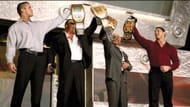
One basic requirement of every faction is that it must elevate its members to the next level. If that criteria alone is taken into consideration, Evolution will top this list.
While the nWo never promoted anyone other than the original three members and DX never allowed X-Pac and the Outlaws to transition themselves to the main event picture, Evolution stayed true to its name.
Admirably booked as a stable that included the past, the present and the future of WWE, Evolution provided the ideal platform for the then rookies Randy Orton and Batista to evolve into the faces of the WWE.
Comprising of Ric Flair and Triple H, in addition to the above duo, Evolution existed for about three years. While securing Triple H’s legacy was the prime motive of the group, both Orton and Batista became World Champions while in the group or immediately after splitting.
Triple H would job to both Orton and Batista to establish the duo in the company and the faction would disintegrate in an organic way – every other member eventually battling Triple H before leaving the group.
#5 The Ministry of Darkness
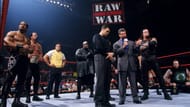
The faction that brought about the true dark side of the Undertaker’s persona was the Ministry of Darkness. Transitioning himself from a stoic monster into a cult leader, Undertaker enlisted the services of Mideon, Viscera, the Acolytes and the Brood in forming the ministry.
Engaging in then heinous acts like sacrificing Stephanie McMahon and crucifying the Big Bossman, the Ministry sent a chill down the spines of the WWE fans. Initially feuding with Vince McMahon, the Ministry’s momentum slowed down after Vince himself was revealed to be the superior power that Undertaker was referring to in his promos.
The Ministry would then join with the Corporation to become the Corporate Ministry.
#6 The Hart foundation
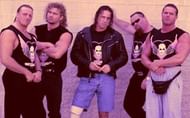
The original Hart foundation consisted of just Bret Hart and Jim Neidhart, won multiple tag team titles from 1985-1991. However, the Hart foundation as a stable came into being in 1997 when Bret reformed it with his brother Owen, the British Bulldog, Brian Pillman as well as Neidhart.
The stable would exist only for a short time, however, they successfully established themselves as a heel stable in that time. They were portrayed as Anti-American and Pro-Canada and the faction was so polarising that they would be booed in the US and cheered in Canada.
They held all the available gold in the WWE at the time; namely the WWF Championship, the Intercontinental Championship, the European Championship and the Tagteam titles.
Pillman’s sudden death in 1997 and the Montreal Screwjob that occurred a month later meant that all members other than Owen were gone from the WWE within a year of its formation.
#7 The Shield
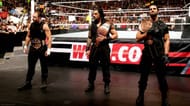
The Nexus initiated the trend of a group of developmental territory guys making an impactful debut in the WWE. It can be argued that the Shield just copied the concept, but they figure ahead of the Nexus in the list because of the better career progression of their respective members.
The Shield made their main roster debut in November 2012 and they remained unbeaten till May 2013, defeating the likes of the Undertaker, John Cena, C M Punk, Daniel Bryan and Randy Orton in singles or tag team matches. They were unbeaten at two Wrestlemanias during this time, playing the heel during the first and face during the second.
Dean Ambrose would win the United States title whereas Seth Rollins and Roman Reigns would become tag team champions during that spell. The greatest feather in the Shield’s cap came when they trounced the reformed Evolution in three successive PPVs to ascertain their main event status.
Rollins would betray Reigns and Ambrose soon after, signalling the end of the Shield. However, within four months of the split, all three members would go on to headline numerous PPVs and their singles careers would take off.
Rollins would win the Money in the Bank briefcase and cash in successfully to become the WWE Champion. Reigns would follow suit winning the Royal Rumble and becoming a two-time WWE Champion. Ambrose would have multiple main event World title matches and would eventually win the Intercontinental title.
#8 The Nexus
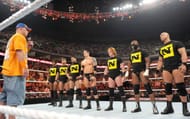
The original concept of complete unknowns successfully attacking established WWE main eventers was introduced by the Nexus. Comprising of all the participants of the original NXT season, Wade Barrett and co demolished John Cena on a 2010 Raw episode.
The Nexus included guys like future tag team champions Heath Slater and Justin Gabriel, Darren Young, Ryback (as Skip Sheffield), Michael Tarver, David Otunga and a young Daniel Bryan.
They ran rough shots throughout the WWE and their ‘pack of wolves’ routine of slowly encircling the ring and attacking their opponents has been copied by multiple stables including the Shield and the Wyatt family.
Even though Slater and Gabriel captured the tag team titles during their time in the Nexus, only Barrett’s career progressed as a result of the Nexus and the rest of the members were left to flounder after its split. The Nexus would eventually be rebooted as the New Nexus under the leadership of C M Punk, but the arrival of ‘The Summer of Punk’ meant that the new faction would be short lived as well.
#9 The Corporation
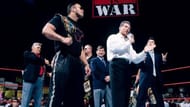
The stable that propelled the Rock to his first WWE Championship, the Corporation was set up by Vince McMahon as a defence against the more rebellious WWE Superstars like Stone Cold Steve Austin.
Initially comprising of Vince, The Rock, Shane McMahon, Ken Shamrock, The Big Bossman, Pat Patterson and Gerald Briscoe, the group would help the Rock win the WWF title three times.
Shamrock and Bossman would become double champions during their stint, winning the Intercontinental and Hardcore titles in addition to the Tag team Championships. Later additions to the group would be Test, Chyna, Kane and Shawn Michaels.
The group would see various people getting kicked out including Vince and the Rock and would eventually merge with the Undertaker’s ministry before reforming something similar to its original incarnation as the McMahon-Helmsley faction with Triple H and Stephanie leading the same.
#10 The Wyatt family

Portraying themselves as lunatics from the countryside, the Wyatt family managed to strike a chord with the WWE fans mainly due to the electric promos of their leader – Bray, their hip music and their fireflies entrance.
Even though most of their feuds remained the same in concept – with the three of them attacking a superstar and Bray promoting the match with cryptic promos, they became widely popular.
After being together for nearly two years, Luke Harper and Erick Rowan would leave the family to kick start their singles careers. Despite Harper winning the Intercontinental title, their solo runs were deemed failures and they were soon back in the family.
The addition of Braun Strowman has made the family stronger than before with no hints of a breakup coming anytime soon, the Wyatts might just remain the resident creeps of the WWE for quite a while.

